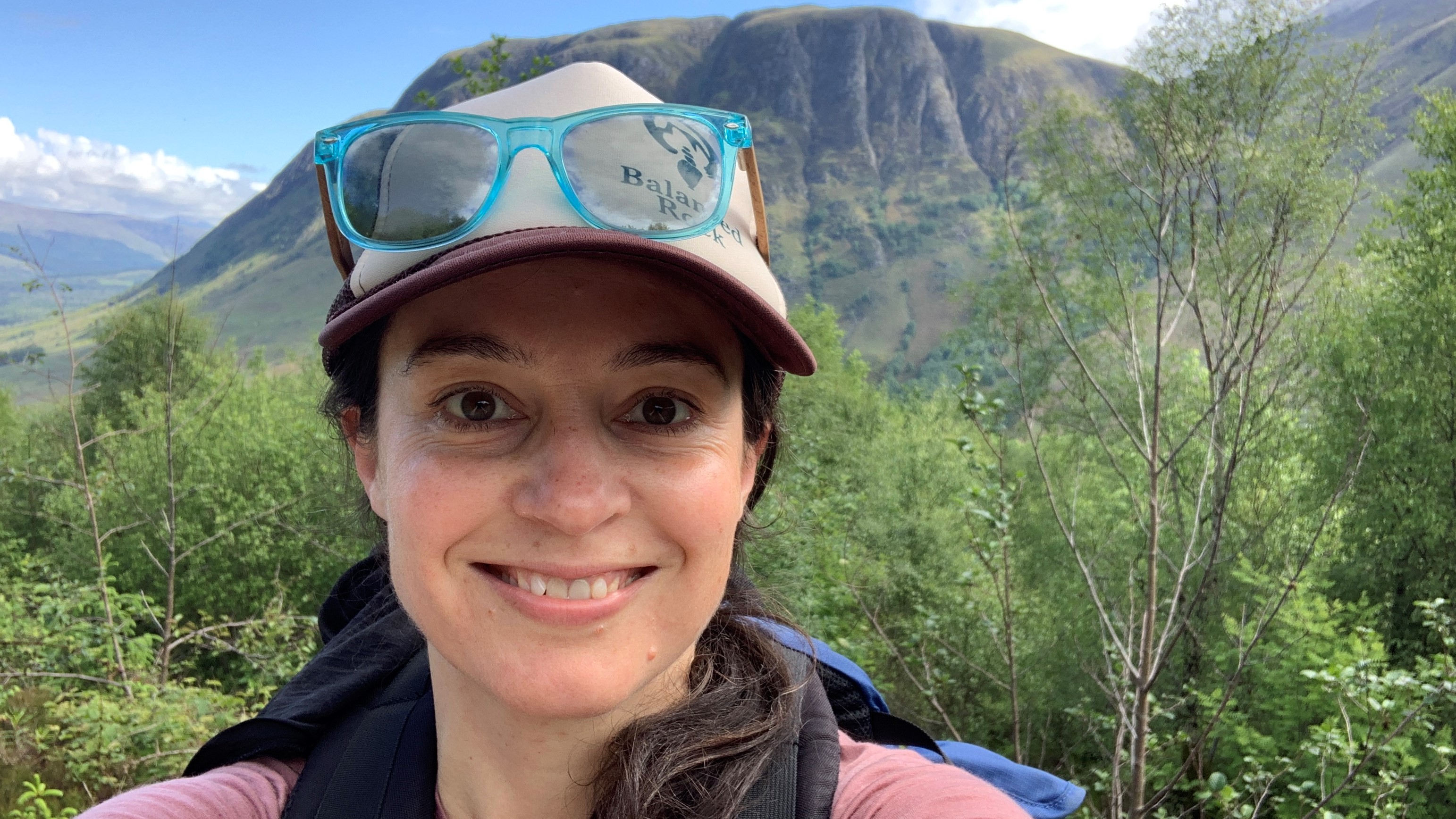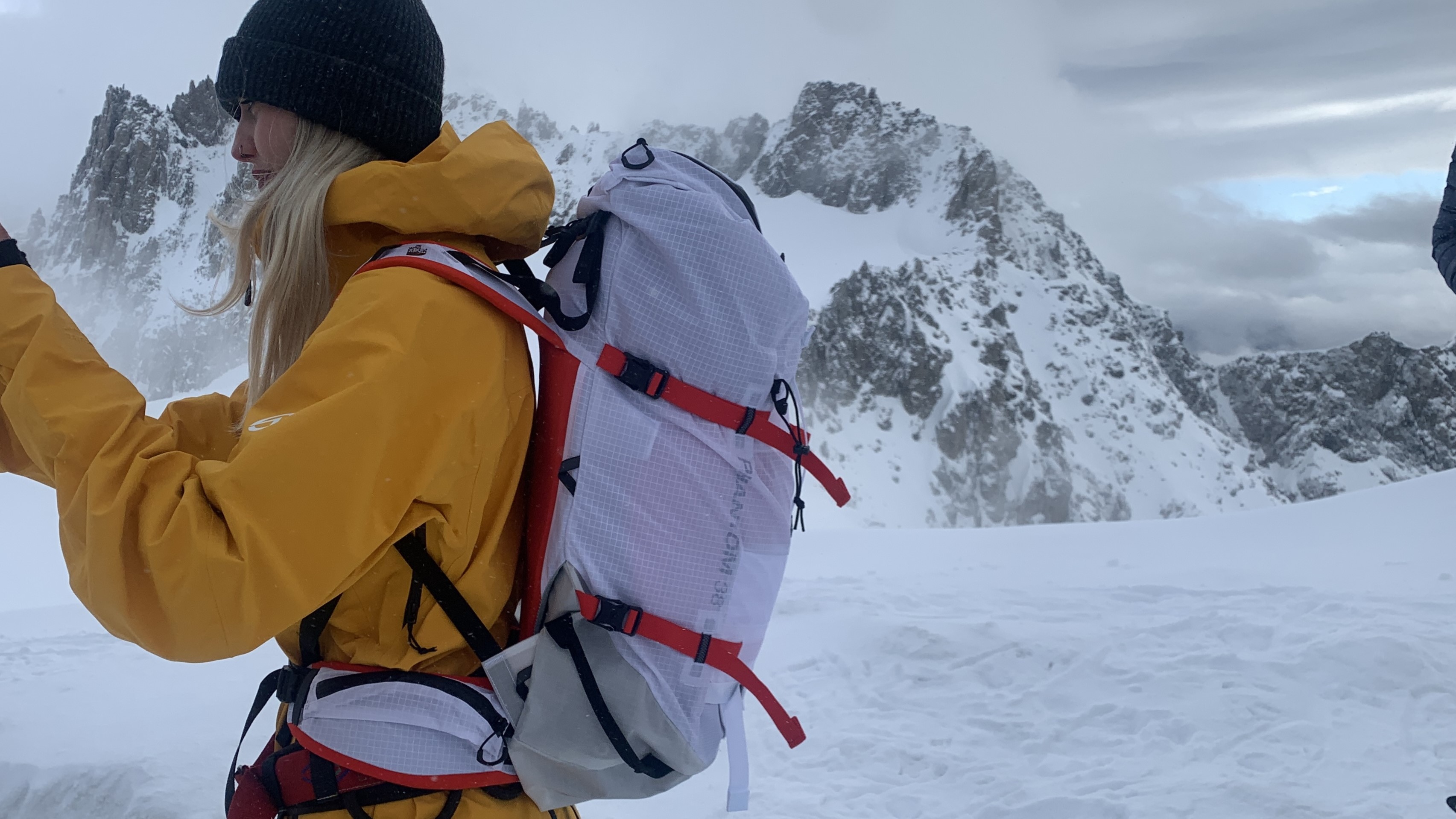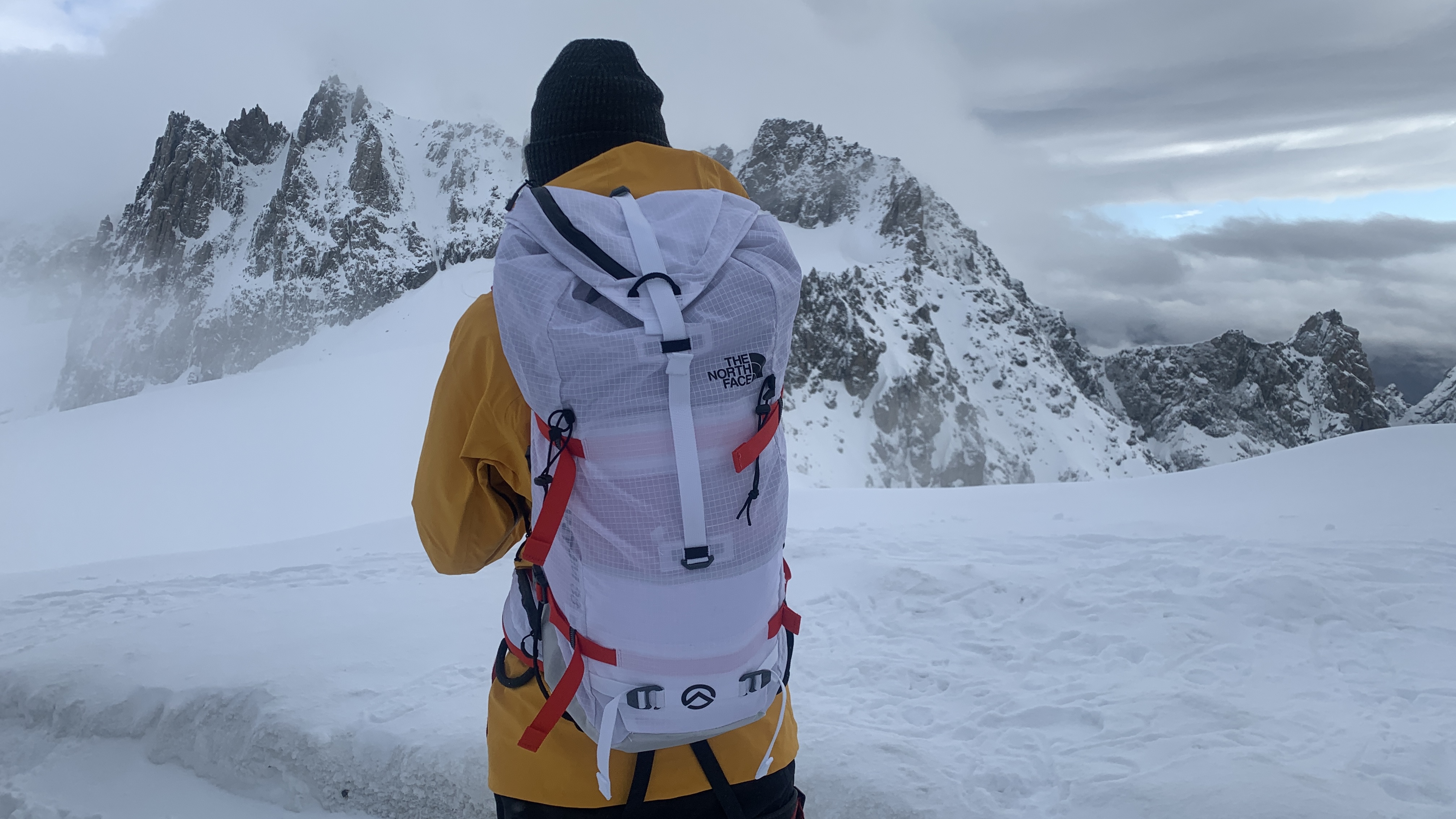Advnture Verdict
This sleek, versatile pack is built for alpine climbing adventures and delivers excellent weight-to-capacity with an extremely comfortable carry and rugged design. It's compressible enough to be used for a long day hike as well as an overnight adventure, though day hikers might prefer a few more pockets.
Pros
- +
Versatile
- +
Very comfortable carry
- +
Compressible
- +
Lightweight
- +
Simple design
- +
Lots of gear attachments
- +
Durable ripstop fabric with DWR
- +
Hydration bladder compatible
Cons
- -
No side zip access to main compartment
- -
Hip belt pockets too small for phone
- -
No helmet carry
- -
Not waterproof
You can trust Advnture
Meet the reviewer

Julia Clarke is a staff writer for Advnture.com and the author of the book Restorative Yoga for Beginners. She loves to explore mountains on foot, bike, skis and belay and then recover on the the yoga mat. Julia graduated with a degree in journalism in 2004 and spent eight years working as a radio presenter in Kansas City, Vermont, Boston and New York City before discovering the joys of the Rocky Mountains. She then detoured west to Colorado and enjoyed 11 years teaching yoga in Vail before returning to her hometown of Glasgow, Scotland in 2020 to focus on family and writing.
The North Face Phantom 38 backpack: first impressions
This backpack is built for alpine climbing missions, so The North Face has gone all in on tough fabric, a streamlined design and all the attachment points you could dream of for your winter gear, including your rope, ice axe and even skis.
At its core, the design of this backpack is pretty simple: a 38-liter cylinder that you access from the top lid, which has a small zipped pocket. Generous compression straps help you tamp down a heavy load and mean the pack is sleek for when you're struggling through deep snow or squeezing through tight spaces.
The translucent white fabric, which they explain is so you can more easily see your gear inside your pack, and may not look up to mountain adventures but don't let appearances fool you. The ripstop repels dirt as well as water and is tough enough to handle axes and crampons, while a reinforced base adds extra protection.
• List price: $179 / £160
• Gender specification: Unisex
• Sizes: S/M, L/XL
• Capacity: 38L
• Weight (S/M): 2.1 lbs / 970 g
• Materials: 210D Recycled Nylon With Spectra® Ripstop And Non-PFC Durable Water-Repellent (Non-PFC DWR) Finish
• Best use: Hiking, mountaineering
Once it's loaded up, the suspension system and light weight deliver a noticeably comfortable carry even when you have to wear this pack all day. The sternum strap has a built-in whistle and the hip belt boasts two small zipped pockets that won't fit a phone but will hold your multi-tool and compass.
This is one of those packs that can work for an overnight or a long day hike. It's not got as many pockets as your average hiking backpack – there are no side pockets for your water bottle, for example, but it does have a hydration bladder pouch. There's also no helmet carry, so if you're going mountaineering you'll need to save some space in the main compartment or get creative.
That said, it's robust, roomy and uncomplicated, and if you're looking for a one-pack-fits-all approach that's tough enough for alpine adventures, you could do a lot worse than this hauler.
The North Face Phantom 38 backpack: in the field

When it comes to backpacking I've already found my forever pack: the Sierra Designs Flex Capacitor. But when The North Face invited me to go glacier trekking in the Italian Alps, I knew that wasn't going to cut it. I received this pack for that cold, snowy adventure and have continued testing it out back in Scotland to see what stuff it's made of.
Here’s how it performed:
Sizing, fit and comfort
I'm 5'4" so I tested the S/M size of this pack and it seems to fit really well, sitting up nicely on my hips with the weight off my shoulders. The load hauler straps pull the load close which was good as I was roped between two other hikers in a line of six people total traversing the glacier on snowshoes, which can make for some tricky walking and the last thing I'd have wanted is my backpack swinging around behind me.
The first day, I ended up wearing this backpack from about 8 a.m. until 1 p.m. which isn't exactly all day, but it gave me a good indication of how comfortable it is and the answer is: very. It's extremely light, which helps a lot, and the padded back and straps provide loads of cushioning and feel great.
Storage and attachments
This backpack is cylindrical, which basically means you don't get robbed of any of that 38 liters you've been promised. I can easily pack my backpacking gear in here as well as extra layers, and in fact it's so roomy I even used it recently for a week away in a National Park where I was driving but didn't want to bring a suitcase.
That said, for day hiking, it doesn't have tons of pockets. There are no stretchy side pockets for water bottles, since this is designed for alpine environments where said water would freeze. The lid isn't massive, but it's easily enough for all my small bits and pieces of gear and the two zipped pockets on my hip belt aren't quite big enough for my phone, though I did use one for my wallet when using this as my carry on on a flight home from Geneva. But if you want to carry gear like climbing ropes and sleeping bags, you'll be happy both with the capacity and the compression, which work together to make for a fairly versatile pack.
For attachments, you can safely and easily carry your ice axe, skis and rope, but crampons will need to be packed away in the main compartment along with your helmet when you're not using them.
Durability, weather protection and other features
Because this pack is white and translucent, it's easy to think it's more fashion than function, but while it looks great, it really is made of tougher stuff than meets the eye. The bottom, which is the part of a backpack that sees the most wear and tear, is reinforced and this might not be as tough as my North Face Base Camp Duffel, it's clearly a sturdy piece of gear built to handle rugged adventures.
It's water-resistant, like most packs, and doesn't come with an integrated rain cover, but again, since it's built for alpine environments and not the Scottish Highlands, that's what I'd expect.
It comes with an integrated whistle, which is fast becoming the norm, and all of the fastenings are blissfully simple to use.
The North Face Phantom 38 backpack: the bottom line
To call this a Jack-of-all-trades backpack is a little reductive, but in many ways it's true. It's big enough and tough enough for alpine expeditions but light enough and compressible enough to make it not a totally crazy choice for a long day hike. If you're only ever going to go hiking and backpacking in fair weather on lower-lying trails, you could probably find a more suitable pack (like the Gregory Katmai 55) but if you want a pack that suits many adventures including alpine climbing, this could be your forever pack.
Julia Clarke is a staff writer for Advnture.com and the author of the book Restorative Yoga for Beginners. She loves to explore mountains on foot, bike, skis and belay and then recover on the the yoga mat. Julia graduated with a degree in journalism in 2004 and spent eight years working as a radio presenter in Kansas City, Vermont, Boston and New York City before discovering the joys of the Rocky Mountains. She then detoured west to Colorado and enjoyed 11 years teaching yoga in Vail before returning to her hometown of Glasgow, Scotland in 2020 to focus on family and writing.


